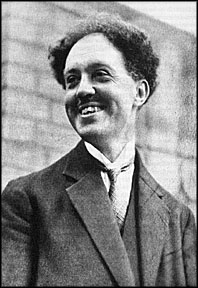1915-1924: Physics Extends its Reach
By Hans Christian von Baeyer

For four years, from 1914 to 1918, World War I engulfed the world and overshadowed scientific pursuits. When it was over, and scientists could resume their research, they immediately began applying the conceptual tools perfected before the war to push the frontiers of physics both outward and inward. In the cosmic realm, general relativity provided the theoretical framework, and the giant telescopes built in the clear air of California the observational support, for the emergence of physical cosmology - the science of the structure and history of the universe. An essential preliminary step was a test of general relativity. In 1919, when the bending of starlight by the sun, as predicted by Einstein, was observed, he instantly became an international media star. The curvature of spacetime, while not fully comprehensible to most people, nevertheless seemed to be such a profound insight into the structure of the universe that it caught the imagination of a wide public. Since then, general relativity has been confirmed by numerous observations, and remains in place as the correct theory of gravity. But the study of cosmology itself would take surprising turns in the coming decades.
In the atomic realm, confusion reigned. Despite heroic efforts by physicists throughout the world, Bohr's theory had only very limited success in accounting for the properties of the light and X rays emitted by atoms. Quantum theory seemed headed for failure - or a revolution. The vital clue was found more by guessing than by deduction. In 1923 the French physicist Louis De Broglie was writing his doctoral dissertation at the age of 31. Deeply impressed with Einstein's interpretation of light as both wave-like and particle-like, he wondered whether this strange wave-particle duality could apply to particles of matter as well. Specifically, he proposed that electrons too have wave-like characteristics, and even suggested a formula for their wavelength. Most of his colleagues ignored these wild and unsupported claims, but Einstein, who had a reliable intuition about physics, wrote: "I believe it is the first feeble ray of light on this worst of our physics enigmas." Einstein turned out to be right: De Broglie had discovered the secret of matter. But as De Broglie himself admitted in his thesis, unless experimental proof could be found, his theory would remain useless speculation.
Editor's Note: A CENTURY OF PHYSICS, a dramatic illustrated timeline wallchart of over a hundred entries on eleven large posters is intended for high schools and colleges. Each poster covers about a decade and is introduced by a thumbnail essay to provide a glimpse of the historical and scientific context of the time.
In June, APS News will feature the fourth introductory essay 1925-1934: The Language of the Atom.
©1995 - 2024, AMERICAN PHYSICAL SOCIETY
APS encourages the redistribution of the materials included in this newspaper provided that attribution to the source is noted and the materials are not truncated or changed.
May 1998 (Volume 7, Number 5)
Articles in this Issue

